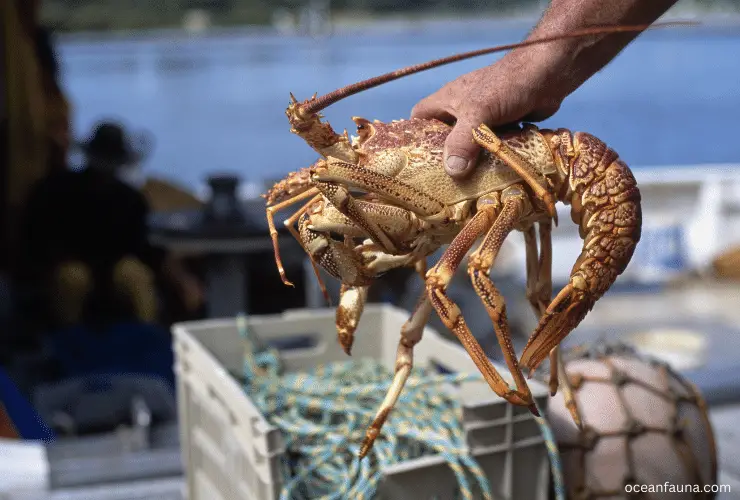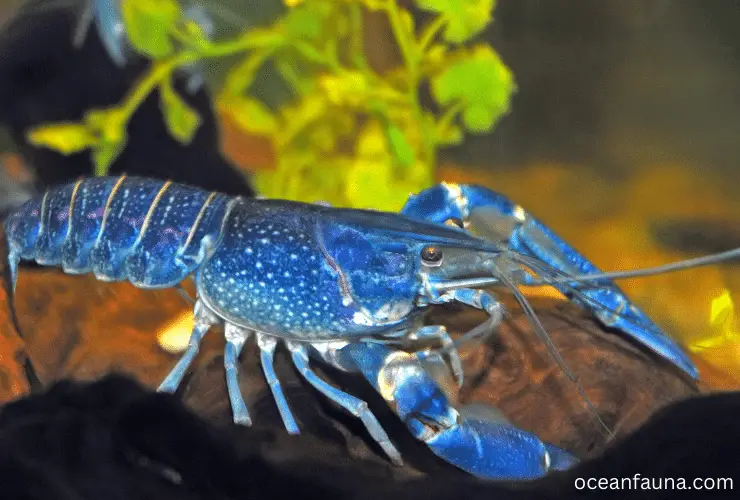A lobster is a saltwater oceanic crustacean. When they are out of their natural habitat, their lifespan becomes much shorter.
Generally, lobsters can live out of water from a few hours up to 48 hours. They may survive longer if kept in moist and cool conditions with oxygenated water.
Even they can’t survive more in freshwater. You might know that lobsters have gills but don’t function well in freshwater.
This article will tell you more detail about how they survive out of the water and which complications they face in adverse situations.
How Long Do Lobsters Live?
Lobsters are known for their impressive lifespan, with species like the American lobster living over 100 years. However, the lifespan of lobsters varies depending on the species, with the European lobster having a comparatively shorter lifespan.
On average, male European lobsters live to 31 years old, while females can survive up to 54 years. Although these are the average lifespans, there are always exceptions to the rule. For instance, researchers have observed a female European lobster reaching an astonishing age of 72.
Lobsters are known for their slow growth and late maturity, which contributes to their long lifespan. Because of this, they are often considered a symbol of resilience and endurance in many cultures.
Environmental conditions, food and habitat availability, and predation pressure can influence the lifespan of lobsters. For instance, while lobsters can live for years in their natural habitat, they can survive only for 1-2 days out of water.
Nevertheless, the longevity of lobsters is truly remarkable and has attracted the attention of scientists and seafood enthusiasts alike.
How Do Lobsters Breathe?
Lobsters breathe through their gills, which are located on both sides of their bodies in a special chamber. The gills are made up of thin, finger-like structures called filaments. These filaments are covered in tiny blood vessels, which allow the lobster to extract oxygen from the surrounding seawater.

To breathe, the lobster pumps water over its gills using a special organ called the scaphognathite. This organ is located at the base of the lobster’s antennae and consists of two paddle-like structures that move back and forth, creating a water current over the gills.
Once the water passes over the gills, the oxygen is absorbed into the lobster’s bloodstream, and carbon dioxide is released back into the seawater. The lobster then expels the used water through special openings called nephridiopores, which are located on the side of its body.
Can lobsters breathe in the air?
Yes, lobsters can extract oxygen from the air. This is because they can breathe through their gills as long as they remain moist.
When a lobster is out of the water, it can still survive for a short period of time as long as it is provided with a moist environment.
Can Lobster Live Out of Water?
Yes, lobsters can live out of water for a short period of time. However, their survival depends on several factors, such as the species of lobster, the size of the lobster, and the environmental conditions in which they are kept.
Some species of lobsters are better suited for survival out of water than others. For example, the American lobster can live out of water for up to 48 hours, whereas the European lobster can only survive for a few hours.
Also, larger lobsters may have a better chance of survival than smaller ones, as they have more internal moisture to sustain them.
Environmental conditions also play a crucial role in determining the lobster’s survival rate. The temperature and humidity of the surroundings can significantly impact the lobster’s ability to breathe and retain moisture.
Lobsters generally require a cool and humid environment to survive out of water. If the surroundings become too hot or dry, the lobster’s gills will become dry and suffocate.
Follow some basic guidelines to keep a lobster alive out of the water. The lobster should be kept in a cool and humid environment, preferably in a damp container or on a bed of moist seaweed. It should be kept away from direct sunlight or heat sources.
Additionally, the lobster should not be handled too much, as this can cause stress and further dehydration.
How Long Can a Lobster Live Out of Water?
A lobster can live out of water for a few days if kept in a moist and cool place. This is because lobsters have the ability to extract oxygen from the air, allowing them to survive outside of the water.
However, in order to do this, their gills must be kept moist. If their gills dry out, they will collapse, and the lobster can no longer breathe.

Even with proper moisture and temperature control, a lobster’s time out of the water is limited. After a few days, the lobster will begin to weaken and become less active. This is due to a variety of factors, including dehydration and the buildup of waste in their system.
In addition, not all lobsters are created equal when it comes to their ability to survive out of water. Different species of lobsters have different tolerances for air exposure, with some able to survive for longer periods than others.
Can Lobster Live in Freshwater?
No, lobsters cannot live in freshwater. This is because they require salt to survive and maintain the proper salinity of their bodies. Lobsters are marine creatures that live in seawater with a salt concentration of approximately 35 parts per thousand (ppt). In comparison, freshwater has a salt concentration of less than 0.5 ppt.
Lobsters can suffer from osmotic shock when exposed to freshwater for a prolonged period. Osmotic shock occurs when the concentration of salts and other dissolved substances outside the body significantly differs from that inside the body.
This disrupts the balance of fluids and electrolytes in the lobster’s body and can cause dehydration, electrolyte imbalances, and other potentially fatal health problems.
In addition to the risks of osmotic shock, freshwater also lacks the essential minerals and nutrients that lobsters require.
These include iodine, which is essential for proper thyroid function and the growth and development of the shell; magnesium, which is important for muscle function; and calcium, which is necessary for the formation and maintenance of the lobster’s shell.
How Long Do Lobsters Live in Freshwater?
Based on the risks of osmotic shock and the lack of essential minerals, lobsters are unable to survive for extended periods in freshwater. The time period in which a lobster can live in freshwater before experiencing negative health effects ranges from a few hours to a maximum of 24 hours.
When lobsters are exposed to freshwater, their bodies go through a process called osmoregulation. This is how they balance the concentration of salt and other ions in their tissues with the surrounding water.
In freshwater, lobsters must expel excess water and take in the necessary ions to maintain normal bodily functions. However, this process puts great stress on their bodies and can lead to dehydration and electrolyte imbalances.

The lack of essential minerals, particularly calcium, in freshwater is another reason why lobsters cannot live for extended periods in this type of habitat. Calcium is vital for the strength and hardness of the lobster’s exoskeleton, and without it, the lobster’s shell becomes weak and brittle.
As a result of these factors, lobsters in freshwater will begin to show signs of distress within a few hours. Dehydration, electrolyte imbalances, and other health problems make their appearance and become increasingly severe as time progresses. If the lobster is not removed from the freshwater source, it will ultimately die.
How Long Until the Lobster Dies In Boiling Water?
According to scientific research, lobsters take between 35 and 45 seconds to die when submerged in boiling water. This is a significant amount of time for the lobster as it suffers immensely during this process.
The high temperature of the boiling water causes the lobster’s nervous system to go into shock, and the animal begins to flail its claws and tail in an attempt to escape the boiling water.
Furthermore, lobsters should not be dismembered before being placed in boiling water, as their nervous system can still function for up to an hour. This is due to the presence of ganglia, which are clusters of nerve cells that control the movement of the animal’s limbs. These ganglia continue to function even after the lobster has been dismembered.
Many animal welfare organizations condemn the boiling of lobsters as a cruel and painful method of killing them. Some suggest alternative methods to minimize the animal’s suffering, such as electric shock or stunning the lobster prior to boiling.
Conclusion
Hopefully, you have a detailed knowledge of how a lobster can survive out of the water and the risks associated with keeping lobsters in freshwater.
While lobsters can live for short periods outside of water, they are best kept in seawater or other moist environments. If you want to know more, leave your question in a comment. I will answer them.

